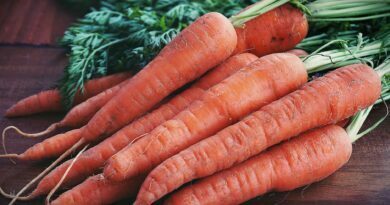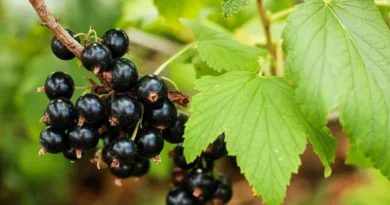The Expert’s Guide to Growing Lettuce: Tips and Tricks for a Bountiful Harvest, plus Mouth-Watering Recipe Ideas
Step 1: Choosing a Variety
Lettuce comes in many varieties, each with its own flavor, texture, and growing requirements. When choosing a variety, consider your climate, soil type, and growing season. Some popular types of lettuce include butterhead, romaine, loose-leaf, and crisphead. You can also look for heat-tolerant or cold-tolerant varieties, depending on your location. As mentioned, lettuce comes in many varieties, so it’s important to choose the right one for your growing conditions. If you live in a warm climate, consider heat-tolerant varieties like ‘Black-Seeded Simpson’ or ‘Summer Bibb.’ If you’re growing in cooler temperatures, try varieties like ‘Buttercrunch’ or ‘Red Sails.’ Some lettuce varieties are better suited for containers, such as ‘Tom Thumb’ or ‘Little Gem.’
Step 2: Soil Preparation
Lettuce grows best in loose, well-drained soil that is rich in organic matter. Start by removing any weeds or rocks from the planting area. Loosen the soil to a depth of 6-8 inches and mix in some compost or well-rotted manure to improve soil fertility. You can also add a balanced fertiliser, such as 10-10-10, to provide additional nutrients.
Step 3: Planting
Lettuce can be planted from seed or transplants. If planting from seed, sow seeds directly into the garden bed, covering with a light layer of soil. Water the bed gently to keep the soil moist. If planting transplants, gently loosen the roots and plant them at the same depth they were in their container. Space lettuce plants 6-12 inches apart, depending on the variety.
Step 4: Care and Maintenance
Water lettuce regularly to keep the soil moist, but not waterlogged. Too much water can cause the plants to rot. Lettuce also prefers cooler temperatures, so consider using shade cloth or planting in a location that gets afternoon shade during the hottest months. Mulch around the plants to retain moisture and suppress weeds. Check for pests like aphids or slugs and treat as necessary.
Step 5: Harvesting
Lettuce can be harvested when it reaches full size, which is usually around 50-70 days after planting. You can harvest individual leaves as needed by gently pulling them away from the plant. This will allow the remaining leaves to continue growing. Alternatively, you can harvest the entire plant by cutting it at the base, leaving a small amount of stem attached.
It’s important to harvest lettuce before it bolts, which means it begins to produce flowers and seeds. Bolting is a natural process that occurs when the plant is stressed, such as during periods of hot weather. Once lettuce bolts, the leaves become bitter and tough, and the plant is no longer suitable for consumption.
To keep your lettuce plants producing leaves for as long as possible, be sure to keep the soil moist and add a balanced fertiliser as needed. By harvesting your lettuce regularly and caring for your plants properly, you can enjoy a continuous harvest of fresh greens throughout the growing season.

Health Benefits Lettuce
Lettuce is a leafy green vegetable that is commonly consumed raw in salads and sandwiches. It is a low-calorie food that is rich in vitamins and minerals. Here are some health benefits of lettuce:
- Lowers the risk of chronic diseases: Lettuce is rich in antioxidants such as vitamin C and beta-carotene, which help to protect the body against chronic diseases like cancer and heart disease.
- Promotes digestion: Lettuce is high in fiber, which helps to promote healthy digestion and prevent constipation.
- Helps with weight loss: Lettuce is low in calories and high in fiber, making it an excellent food for those looking to lose weight.
- Supports healthy bones: Lettuce is a good source of vitamin K, which is important for bone health and can help prevent osteoporosis.
- Provides hydration: Lettuce is mostly water, which can help keep the body hydrated and support healthy kidney function.
- Lowers inflammation: The antioxidants in lettuce can help to reduce inflammation in the body, which is a common cause of many chronic diseases.
Lettuce is a healthy and nutritious food that can provide many benefits to the body. Incorporating lettuce into your diet, whether in salads, sandwiches, or other dishes, is a great way to improve your overall health and well-being.
Here are a few recipe ideas for using your fresh lettuce:
- Grilled Chicken Salad: Grill chicken breasts and slice them into strips. Toss with mixed lettuce, sliced cucumber, cherry tomatoes, and your favorite salad dressing.
- Caprese Salad: Slice fresh mozzarella and tomatoes, and arrange on a bed of lettuce. Drizzle with olive oil and balsamic vinegar, and sprinkle with fresh basil.
- Tuna Salad: Mix canned tuna with diced celery, chopped green onions, and mayonnaise. Serve over a bed of lettuce with sliced hard-boiled eggs.
- Lettuce Wraps: Use lettuce leaves as a wrap for fillings like grilled chicken, shrimp, or tofu. Add chopped vegetables and a drizzle of sauce for a healthy and tasty meal.
- Strawberry and Feta Salad: Mix lettuce with sliced strawberries, crumbled feta cheese, and chopped walnuts. Drizzle with balsamic vinaigrette for a sweet and savory salad.
Growing lettuce is a great way to enjoy fresh, healthy greens straight from your own garden. By choosing the right variety, preparing the soil properly, and providing the right care and maintenance, you can grow a bountiful crop of lettuce. Whether you enjoy it in salads, wraps, or as a side dish, lettuce is a versatile and tasty addition to any meal. With a little effort and some patience, you can enjoy the benefits of growing lettuce in your own allotment.




